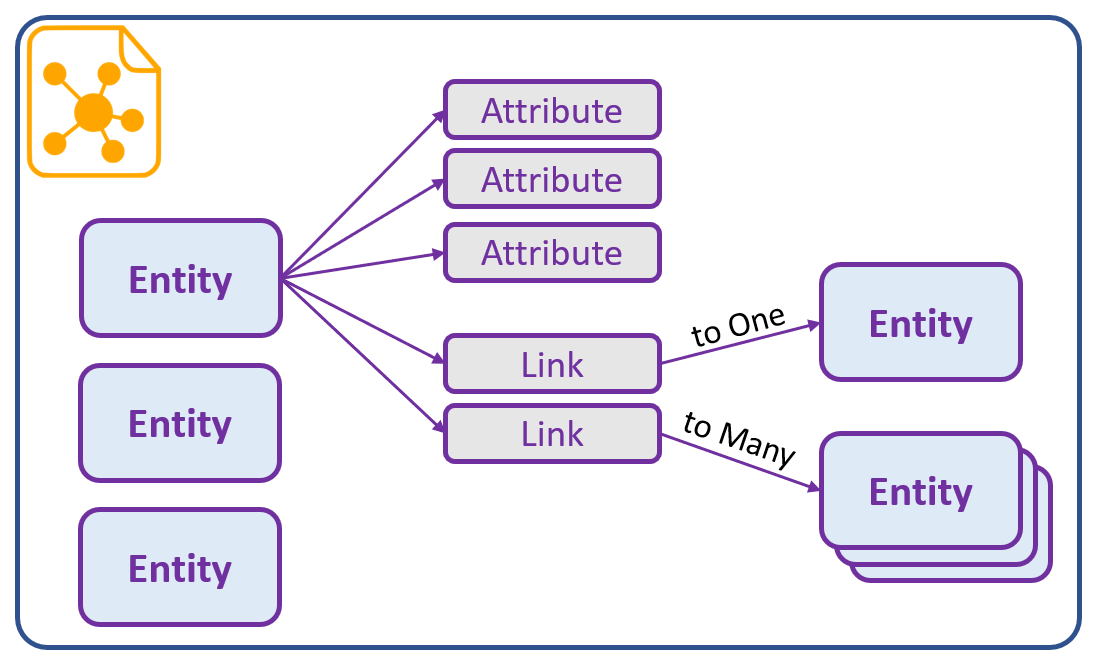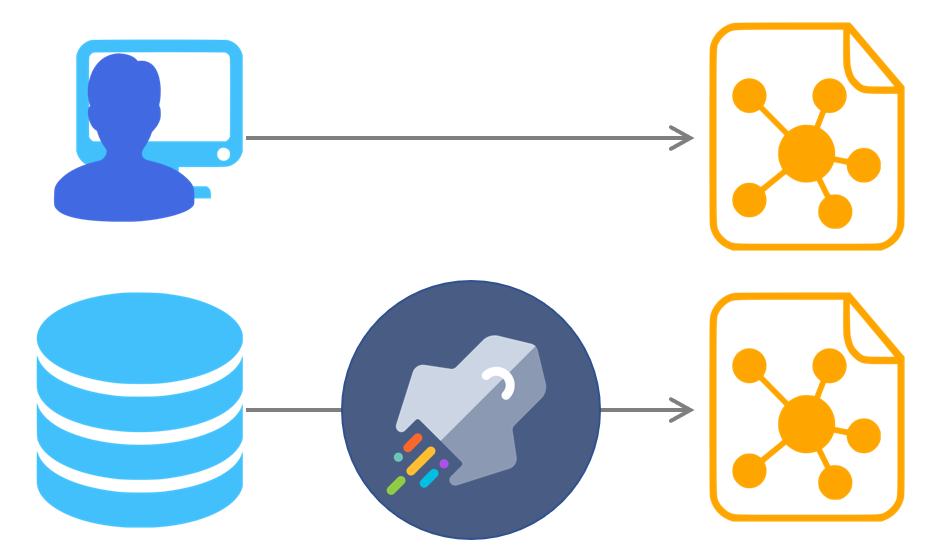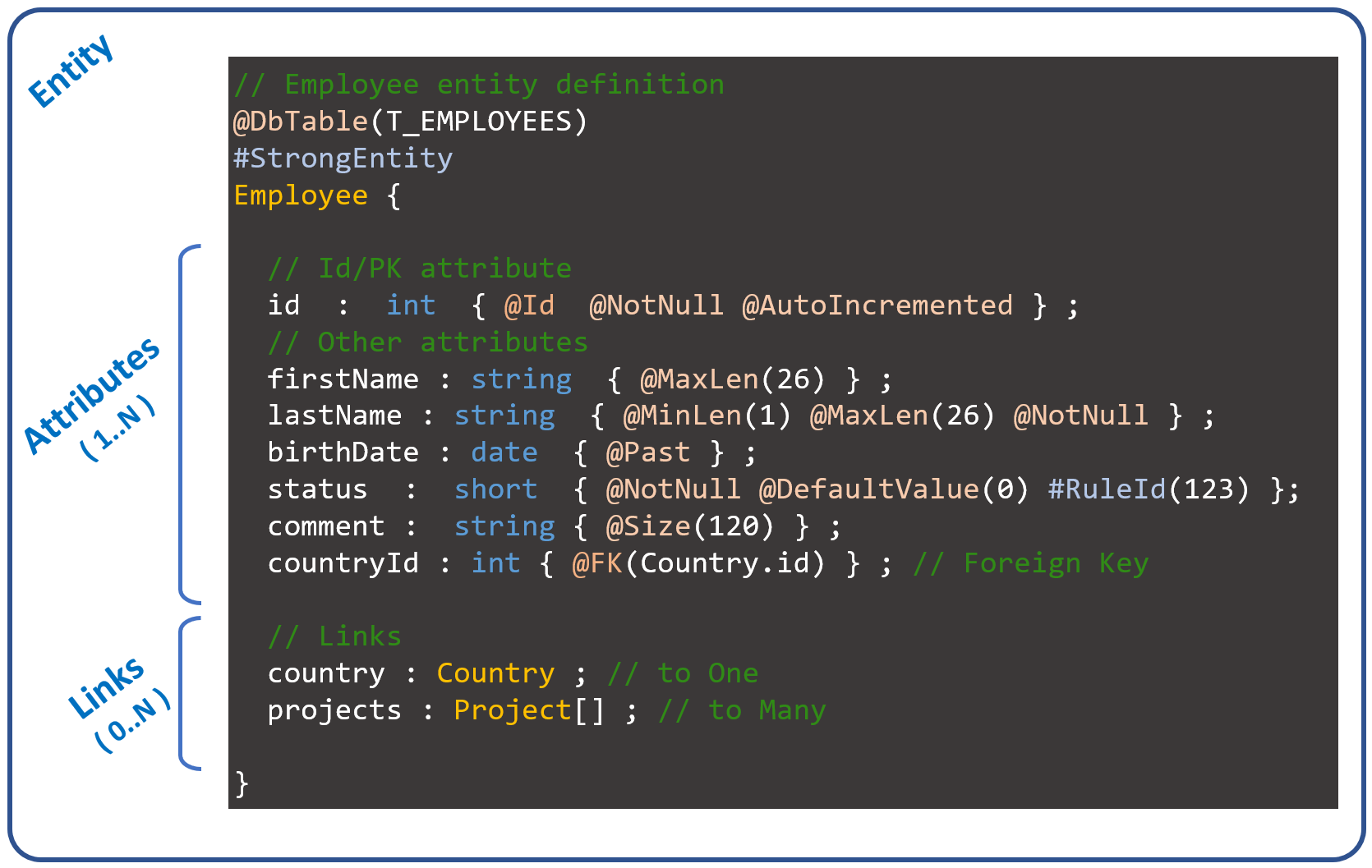Neutral types
As Telosys was designed to generate any type of language, its model uses “neutral types”.
Each "neutral type" will be converted to the target language type during the generation phase.
Annotations
The model syntax provides many “annotations”.
An annotation is a predefined word starting with "@" that can be used to add more precision to an entity, attribute, or link.
The annotations are intended to deal with the most frequent needs.
Tags
For specific needs it is possible to use "tags".
A tag is any word starting with "#", it is then used in templates when generating code.
Tags are useful to extend the model with specific information, so the model can be adapted to all situations
Composite Primary Keys
The Telosys model was designed from its first version to support composite primary keys (and therefore composite foreign keys).
A composite primary key is simply defined by using multiple "@Id" annotations.


